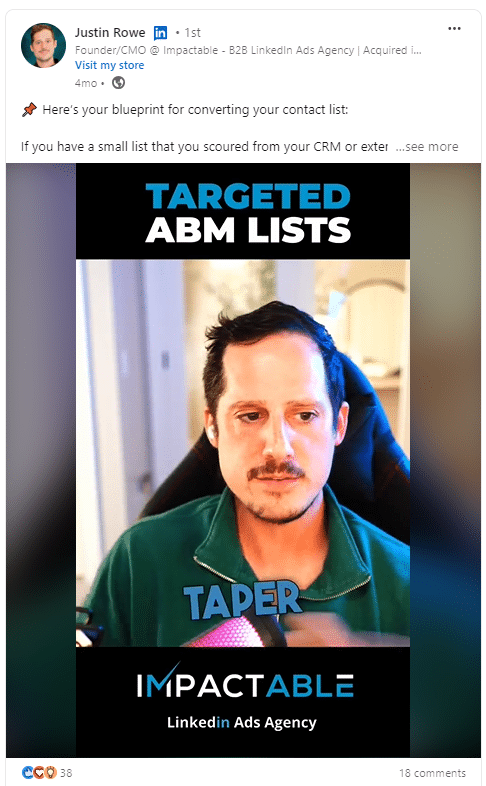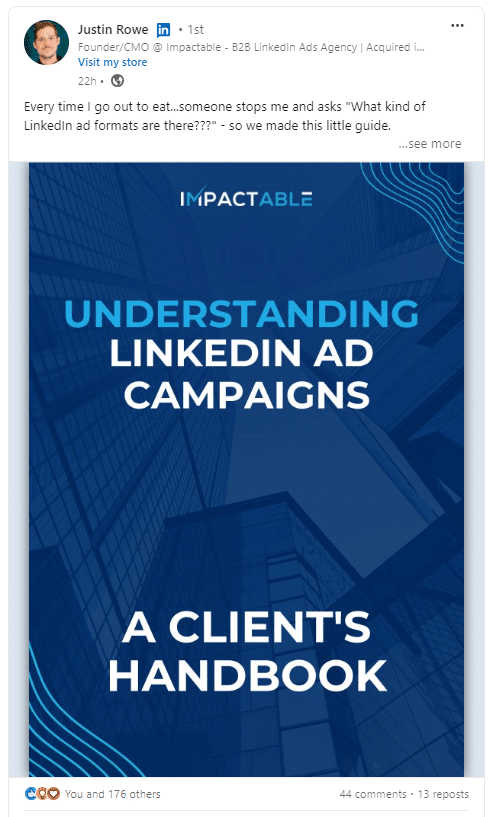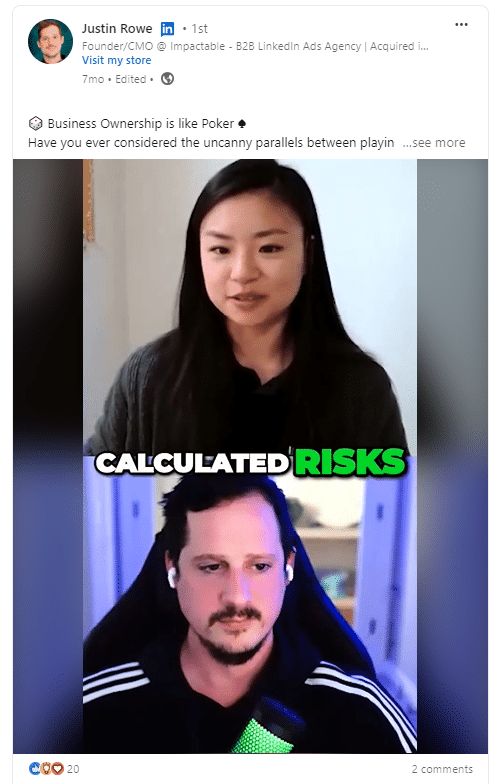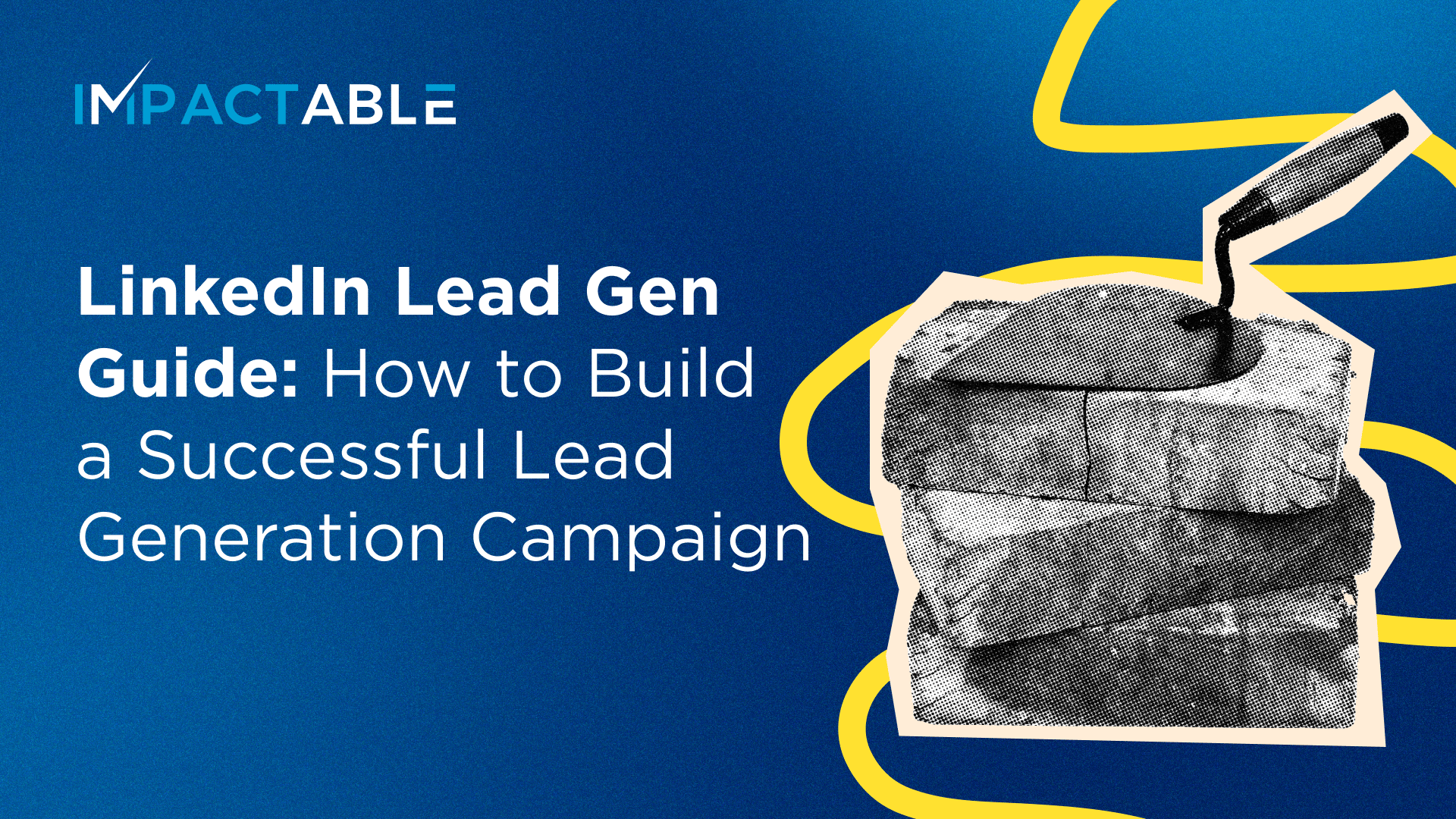Let’s dive into why you should create a B2B content strategy on LinkedIn, what types of content work best, and how to execute a step-by-step plan.
Why would you even want to create a B2B content motion on LinkedIn?
In my experience, LinkedIn is one of the largest professional networking sites in the world. People come to LinkedIn with a mindset to learn about their industry, discover what peers are doing, and be influenced on buying decisions or ways to improve their business. Unlike Facebook, Instagram, or Twitter, where entertainment is the primary focus, LinkedIn is all about personal and professional growth as well as education.
1. Influence buying decisions more easily
People come to LinkedIn specifically to educate themselves about their industry, see what their peers are up to, and get influenced on buying decisions. This is why creating thought leadership or subject matter expertise content is incredibly effective on LinkedIn. You can share your experience as to what’s worked, what hasn’t worked, and what you are currently experimenting with or learning. Being seen as an expert on this platform is far more valuable than on other channels because it’s easier to sway buying decisions for big deals and monetize that influence.
2. Less content creator competition
Another major benefit of LinkedIn is the relatively low number of content creators compared to its large user base. While platforms like Twitter, Facebook, and YouTube are saturated with active content creators, LinkedIn has fewer people consistently producing high-quality content. This means there’s less competition, making it easier to stand out and leverage the platform’s power effectively.
There is even less people on LinkedIn actively producing quality video content as well which is another big advantage right now. This advantage will not always exist as more content creators will continue to try to break into LinkedIn and drive competitive up.
3. Ideal for B2B Content
In the B2B world, LinkedIn stands out because there’s even less competition for creating specific B2B content. YouTube is also underrated for B2B, as there aren’t many channels with large B2B audiences. Targeting this niche on LinkedIn is less competitive, making it easier for you to make a significant impact and establish your presence.
4. Attract a higher-quality audience
Another reason to create content on LinkedIn is the quality of the audience you attract. Viewers and engagements on LinkedIn are often more qualified, leading to higher quality deals and larger deal sizes from the inbound interest you generate. The effort you put into LinkedIn content pays off more because of this higher-quality audience, and the lower barrier to entry makes it even more appealing.
What Type of B2B Content Should You Create for LinkedIn?
So, we’ve covered why you should create content on LinkedIn for B2B. Now, what does that actually look like? What type of content should you be making?
There are two major categories.
1. Subject matter expertise and thought leadership content
The first category is subject matter expertise and thought leadership. These two concepts go hand in hand and involve positioning yourself as an expert in your industry.
To achieve this, you should focus on sharing content that falls into a few key categories.
How-to’s and guides
The first category is how-to’s. This involves creating step-by-step guides or how-to videos that demonstrate exactly how to accomplish tasks that your clients typically pay for.
For instance, I could create content showing you the step-by-step process of setting up a LinkedIn ads campaign. Since clients trust us with their LinkedIn ads, sharing this knowledge not only positions me as an expert but also engages those interested in learning about this topic.
Audits
Another type of content is audits – auditing an actual client account, recommending strategy, and talking about how you can improve something from poor results to good results. By showcasing your skills through practical examples rather than just talking about them in theory, you can effectively demonstrate your expertise and provide actionable insights for your audience.
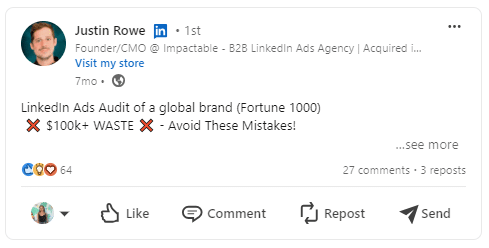
Assets
Another important aspect of subject matter expertise is creating valuable assets. This could be in the form of a comprehensive checklist, a high-quality guide, or an e-book. However, it’s crucial that these resources are not just fluffy content that anyone could produce. Instead, they should be created by individuals within your organization who possess the deepest knowledge and expertise. These assets should provide genuine value to your audience, something they would be willing to pay for.
2. Personal branding and personal experience.
Personal branding and sharing personal experiences is another great one. This involves sharing insights about your journey in the industry, your experiences with your company, and the growth trajectory you’ve been on. Prospects are often drawn to authentic stories that showcase the human side of your brand.
When potential clients are considering you as a vendor or service provider, they want to know more than just your expertise; they want to connect with the personality behind the brand. By sharing the “why” behind what you do and expressing your passion, you create an emotional connection that resonates with your audience. This kind of content can significantly enhance your appeal and build trust with potential clients.
What format should you leverage on LinkedIn?
In my opinion, video content is the most powerful form right now for showcasing thought leadership and subject matter expertise on LinkedIn. While written content like white papers or personality-driven posts can be effective, videos are unparalleled in their ability to engage and educate your audience.
How to create a B2B video for LinkedIn?
Creating B2B videos for LinkedIn involves a few key steps. By following these steps, you can effectively create and leverage B2B videos on LinkedIn to showcase your expertise and engage your audience.
1. Determine the subjects you want to cover
First, decide on the topics to tackle, such as subject matter expertise, thought leadership, personality, and team culture.
2. Prepare basic equipment
When I got started, I didn’t have any fancy equipment, so you can start with some really basic one as well. A decent $100 Logitech camera, a basic light, and a good microphone can make your setup look professional for under $200.
3. Set up and record weekly interviews
Schedule weekly interviews with your founder, CMO, or subject matter experts to discuss the chosen topics.
Use platforms like Riverside for high-quality recordings. Alternatives include Zoom or Loom. These tools can also transcribe your recordings for creating posts or articles.
4. Edit your video
Use Descript, an AI video editing tool, to simplify editing. It transcribes your video and allows you to edit the video by editing the text.
5. Prepare clips for social media
From the full video, create three to five smaller clips. Write accompanying copy for these clips using the transcript.
6. Write copy for posts
Leverage ChatGPT to refine the transcript into high-quality social media posts. Over time, ChatGPT will learn the tone and voice of your subject matter expert, improving the quality of the output.
7. Create images for posts
Use Canva to design images for your posts. Aim for a mix of content types: videos, image and text posts, and text-only posts.
8. Track how your posts’ performance
Use Shield Analytics to analyze your posts’ performance. Identify which topics and videos get the most engagement and exposure, and adjust your strategy accordingly.
9. Repurpose content
To avoid content fatigue, repurpose your top-performing posts. Review your best posts every 90 days, improve them based on learnings, and reuse them.
10. Amplify your success with LinkedIn ads
For top-performing posts that generate leads, consider amplifying them with LinkedIn’s thought leadership ads. This allows you to sponsor personal posts and make them evergreen through paid ads.
The beauty of this approach is that you can turn your organic best hits (the ones that actually generate inbound leads, ideally) into high-targeted, evergreen content that keeps working for you even when you aren’t grinding away on the organic side.
What we do for our clients
This is the exact strategy we use for our content clients. We determine content topics, conduct interviews, create and edit videos, analyze data, and repurpose top content.
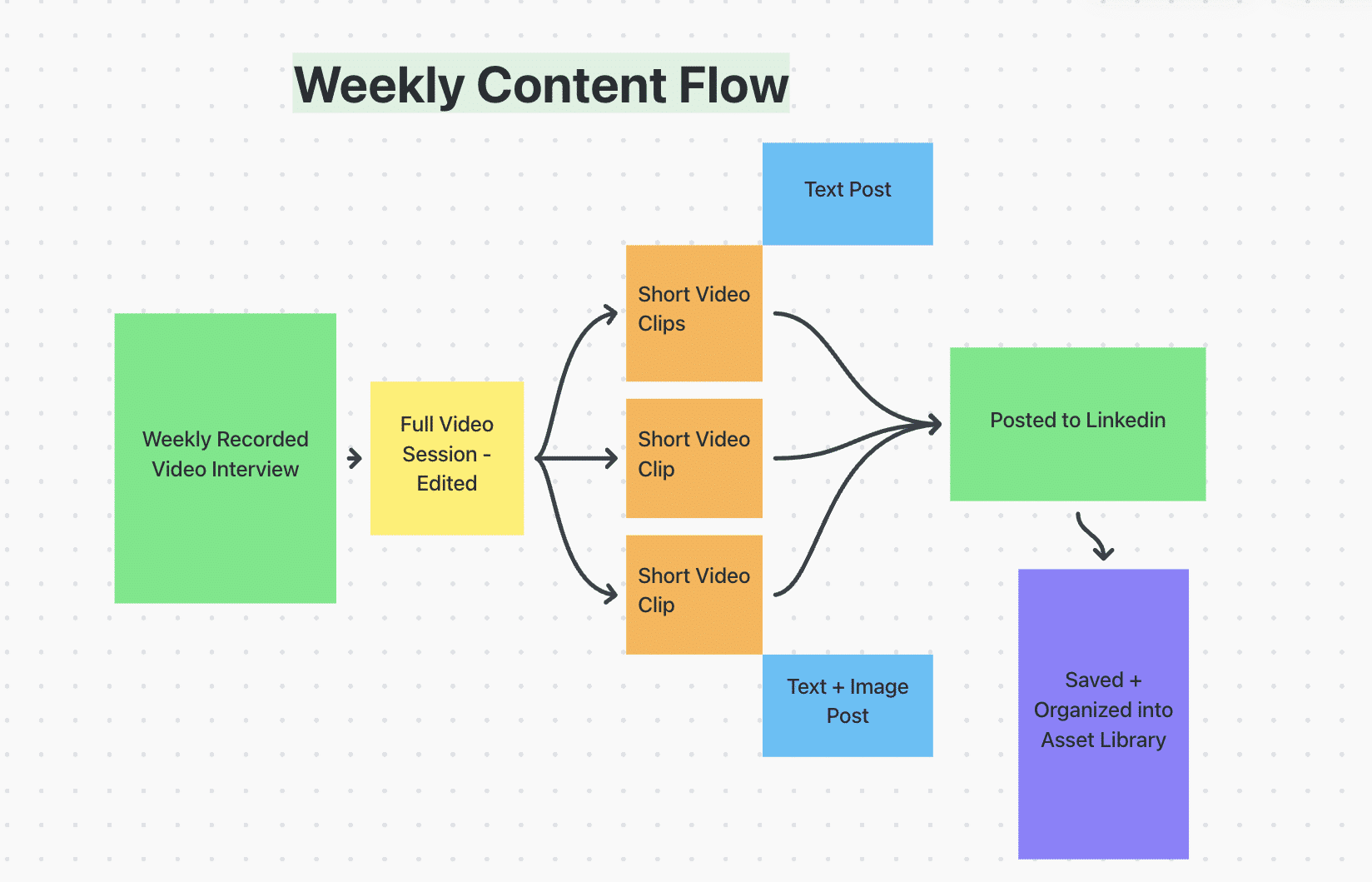
Plus, we recommend amplifying successful posts with LinkedIn ads and creating a binge-worthy YouTube library of your videos.
Final Thoughts
Building a B2B content motion on LinkedIn is about consistency, quality, and leveraging data to refine your strategy. By following these steps, you can create a powerful presence on LinkedIn, influence buying decisions, and attract high-quality leads.




